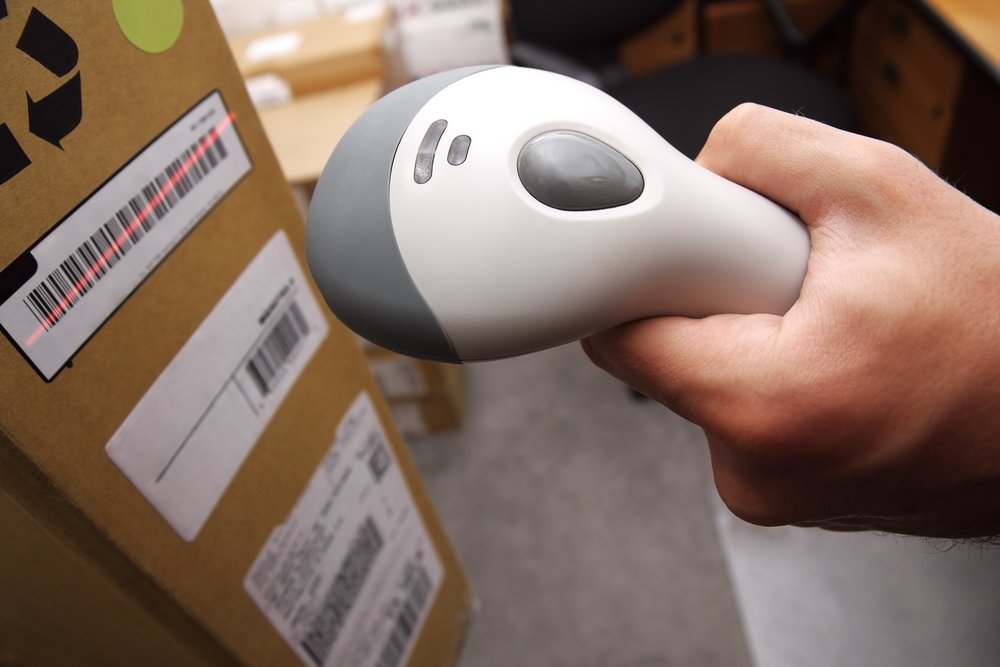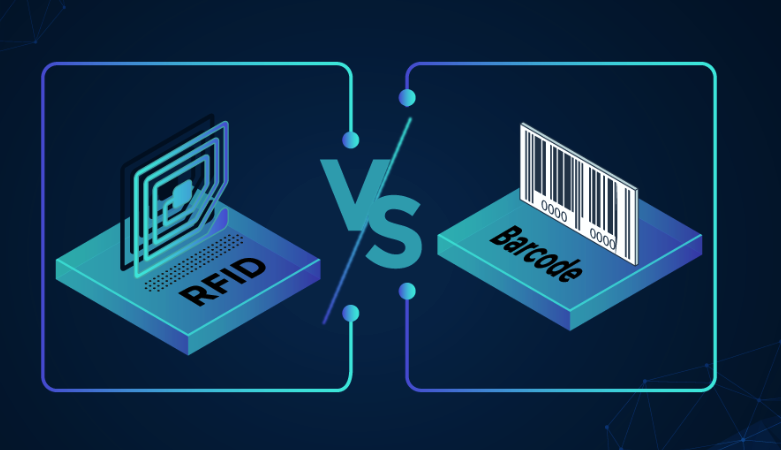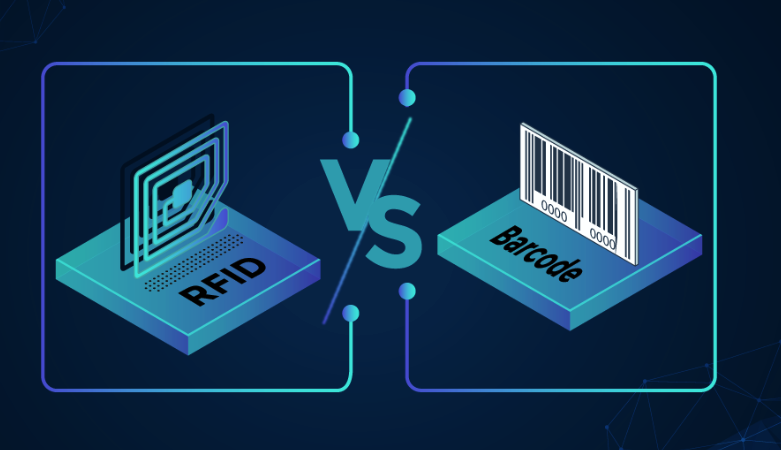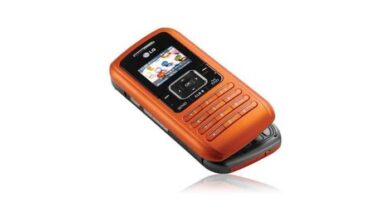RFID Emerges to Threaten Bar Codes
RFID emerges to threaten the bar code, ushering in a new era of inventory management and automation. This technology, with its unique ability to track and identify objects without line-of-sight, is poised to disrupt the traditional barcode system. From warehouses to retail stores, RFID’s potential for efficiency and accuracy is undeniable. Let’s explore how this technology is revolutionizing the way we manage goods.
RFID technology uses radio waves to identify and track objects. Unlike barcodes, which require direct visual contact, RFID tags transmit data wirelessly. This allows for more accurate and efficient tracking, particularly in dynamic environments. Key components include RFID tags, readers, and antennas. Different types of tags (active, passive, and semi-passive) cater to various needs, offering different ranges and power requirements.
Introduction to RFID Technology
RFID, or Radio-Frequency Identification, is a wireless technology that uses radio waves to identify and track objects or people. Unlike barcodes, which rely on visual scanning, RFID uses radio signals, enabling identification from a distance and without direct line of sight. This contactless interaction allows for automation and increased efficiency in various applications, from inventory management to access control.RFID technology operates by utilizing electromagnetic fields to communicate between an RFID tag and a reader.
The tag, typically a small microchip, carries unique identification information. When a reader, equipped with an antenna, detects the tag, it transmits the information wirelessly, enabling the system to identify and track the tagged item.
RFID System Components
RFID systems consist of three key components: tags, readers, and antennas. Understanding these elements is crucial for grasping the technology’s functionality.
- Tags: These are the tiny transponders that hold the unique identification data. They range in size and complexity, depending on the application’s requirements. A tag’s characteristics influence its ability to withstand harsh environments and operate reliably.
- Readers: Readers are the devices that interrogate the tags and receive the identification information. They send radio waves to activate the tags and capture the data they transmit. Readers vary in power and range, reflecting the application’s needs.
- Antennas: Antennas are critical components for transmitting and receiving radio waves. They facilitate communication between the reader and the tag, enabling the identification process. Antenna design is tailored to the specific needs of the application, optimizing range and efficiency.
Types of RFID Tags
Different RFID tags are designed for specific applications. The key distinction lies in their power source and operating mode.
- Active Tags: These tags contain their own power source, usually a battery. This allows for longer read ranges compared to passive tags. Active tags are frequently employed in situations requiring reliable and long-distance communication, such as tracking assets in large warehouses or monitoring livestock.
- Passive Tags: These tags derive their power from the radio waves emitted by the reader. They are cost-effective and suitable for applications requiring low cost and simple implementation, such as inventory tracking in retail stores. Their read range is limited compared to active tags.
- Semi-Passive Tags: These tags utilize a combination of internal power and energy from the reader. Semi-passive tags strike a balance between the advantages of active and passive tags, offering a longer read range than passive tags while maintaining lower costs than active tags. They are suitable for situations where extended range and cost-effectiveness are important, like access control systems.
RFID vs. Barcode Systems
RFID and barcode systems are both used for identification and tracking. A comparison highlights their distinct characteristics.
| Feature | RFID | Barcode |
|---|---|---|
| Reading Method | Wireless radio waves | Optical scanning |
| Range | Potentially longer, depending on tag type | Limited by line of sight and distance |
| Data Capacity | Potentially higher | Limited by the size and design of the barcode |
| Durability | More robust, often suitable for harsh environments | Susceptible to damage or deterioration |
| Cost | Can be higher, especially for active tags | Generally lower |
| Implementation Complexity | Potentially higher initial investment | Easier and quicker implementation |
Overview of Barcodes: Rfid Emerges To Threaten The Bar Code
Barcodes, those seemingly simple black and white stripes, are ubiquitous in modern commerce and logistics. They represent a fundamental technology for tracking and identifying products, making inventory management and supply chain processes far more efficient. Understanding their different types and applications is crucial for appreciating their impact on various industries.Barcodes are essentially machine-readable optical labels that encode data in a visual format.
The arrangement of bars and spaces represents a specific alphanumeric code, which can be interpreted by scanners to provide information about the product or item. This ability to instantly identify and track items is what makes barcodes so valuable.
Barcode Types and Uses
Barcodes come in various formats, each designed for specific needs. Understanding the different types and their characteristics is essential for optimal application. The most common types include UPC (Universal Product Code), EAN (European Article Number), and QR codes.
- UPC (Universal Product Code): Originally developed for grocery items, UPC barcodes are commonly used in North America. They typically represent a unique product identification, including information about the manufacturer and product. The 12-digit code provides a standard way to identify products in retail environments, facilitating efficient inventory management and sales tracking.
- EAN (European Article Number): EAN barcodes are widely used globally, replacing UPC in many regions. The format is similar to UPC, but with some differences in structure and application, enabling broader product identification across international markets.
- QR Codes (Quick Response Codes): QR codes are more advanced than traditional barcodes. They use a matrix of squares to encode data, allowing for much larger amounts of information to be stored compared to linear barcodes. This expanded storage capacity makes them useful for storing URLs, product descriptions, and other details that can be accessed through a smartphone or QR code reader. Their adaptability makes them ideal for marketing, product information, and even tracking packages.
Strengths and Limitations of Barcode Technology
Barcode technology offers several advantages, but also has limitations in certain contexts.
- Strengths: Barcodes are inexpensive to implement, fast to scan, and relatively reliable. Their widespread use has led to standardized systems for product identification, streamlining processes across diverse industries. The ability to automate data capture and retrieval is a major strength.
- Limitations: Barcodes are susceptible to damage or misreading, especially if the label is scratched or the scanner is not properly calibrated. Their format is limited in the amount of data that can be stored, making them less suitable for complex information. The need for a dedicated scanner for reading can sometimes be a constraint in some applications. Also, the visual nature of barcodes can sometimes be obscured by packaging or other factors.
Barcode Applications
Barcodes are used across a broad range of applications, significantly enhancing efficiency and accuracy in various industries.
| Industry | Application |
|---|---|
| Retail | Product identification, inventory management, price marking |
| Logistics | Package tracking, shipment identification, warehouse management |
| Healthcare | Patient identification, medication tracking, medical supply management |
| Manufacturing | Part identification, quality control, production tracking |
| Food & Beverage | Product traceability, expiry date management, allergen information |
RFID’s Emergence as a Competitor
RFID technology is rapidly gaining traction as a powerful alternative to traditional barcodes. Its unique capabilities offer significant advantages in various applications, particularly where real-time tracking, enhanced security, and improved efficiency are paramount. This shift is driven by a confluence of factors, leading to its growing prominence in industries seeking solutions beyond the limitations of barcode technology.RFID’s rise isn’t simply a matter of technological advancement; it’s a response to evolving business needs.
Companies are increasingly demanding more sophisticated tracking and inventory management systems that can handle the complexities of modern supply chains. RFID’s ability to track items in real-time and across vast distances, coupled with its enhanced security features, makes it a compelling choice for organizations looking to optimize their operations.
Factors Driving RFID Adoption
The adoption and growth of RFID technology are driven by several key factors. Improved data accuracy, enhanced security, real-time visibility, and cost-effectiveness are among the primary motivations for its increasing use. The ability to track multiple items simultaneously, reduce human error, and optimize logistics are critical factors.
RFID technology is rapidly emerging to challenge the dominance of bar codes in inventory management. These futuristic tracking systems are poised to revolutionize supply chains, and computer simulations modeling the future here are increasingly used to predict the long-term impact of this shift. The potential for greater efficiency and reduced errors in tracking goods suggests a significant paradigm shift in how businesses operate, ultimately making bar codes a relic of the past.
- Improved Data Accuracy: RFID tags eliminate the need for manual data entry, significantly reducing the risk of errors associated with barcode scanning. This translates into a higher degree of accuracy in inventory management, supply chain tracking, and overall business operations. For example, a warehouse using RFID can instantly verify the presence and condition of goods, eliminating the need for lengthy, potentially inaccurate manual checks.
- Enhanced Security: RFID systems offer enhanced security measures by enabling real-time tracking and authentication. This capability is particularly valuable in industries dealing with sensitive or high-value goods, where the risk of theft or fraud is substantial. The precise location of items can be pinpointed, allowing for swift recovery in the event of theft or loss.
- Real-Time Visibility: RFID systems provide real-time visibility into the location and status of assets throughout the supply chain. This allows businesses to make informed decisions about inventory levels, logistics, and production schedules, optimizing operational efficiency. For instance, a logistics company can track shipments in real-time, ensuring prompt delivery and minimizing delays.
- Cost-Effectiveness: While initial investment in RFID infrastructure might seem higher than barcodes, the long-term cost-effectiveness often outweighs the initial expense. Reduced labor costs, minimized errors, and optimized inventory management contribute to substantial savings over time. For example, automated inventory tracking with RFID eliminates the need for manual stock counts, reducing labor costs and improving overall efficiency.
Use Cases Where RFID Excels
RFID technology surpasses barcodes in specific situations where its capabilities are leveraged. These scenarios often involve tracking high-value items, demanding high levels of security, and needing real-time information.
- High-Value Goods Tracking: Tracking expensive equipment, pharmaceuticals, or other high-value items is significantly enhanced by RFID. The technology ensures precise tracking from origin to destination, minimizing the risk of loss or theft and maximizing security. This is especially important in industries like aerospace, pharmaceuticals, and fine art.
- Real-Time Inventory Management: RFID systems offer real-time visibility into inventory levels, allowing for proactive adjustments to production and delivery schedules. This responsiveness is vital in maintaining smooth operations in fast-paced industries like retail and manufacturing. The instantaneous identification of inventory levels enables optimized stock replenishment, minimizing stockouts and excess inventory.
- Complex Supply Chain Management: RFID’s ability to track multiple items simultaneously, even in complex supply chains, is superior to barcodes. This real-time visibility allows for optimized logistics, improved delivery times, and reduced costs across the entire supply chain. This is particularly valuable for large retailers and manufacturers with extensive distribution networks.
Performance Comparison
RFID and barcode systems differ significantly in their performance characteristics, particularly in terms of speed, accuracy, and scalability.
| Characteristic | RFID | Barcode |
|---|---|---|
| Speed | Rapid data acquisition and processing, enabling real-time tracking. | Slower data acquisition, often requiring manual scanning and entry. |
| Accuracy | High accuracy due to automatic data capture and minimal manual intervention. | Susceptible to errors from poor scanning or human input. |
| Scalability | Easily scalable to accommodate large-scale operations and complex supply chains. | Scaling can be challenging and potentially costly for extensive deployments. |
Industries Replacing Barcodes with RFID
Several industries are already adopting or transitioning to RFID systems to replace barcodes.
- Retail: RFID is being implemented for tracking inventory in retail stores, enhancing efficiency in managing and tracking products from the warehouse to the shelves. This helps to improve inventory accuracy and optimize stock replenishment.
- Logistics and Transportation: RFID is transforming the logistics and transportation sector by providing real-time visibility of goods in transit, ensuring timely delivery and efficient route optimization.
- Healthcare: RFID is increasingly used in hospitals and healthcare facilities to track medical equipment, pharmaceuticals, and patient belongings. This ensures security and reduces errors, enhancing patient safety.
Technical Advantages of RFID
RFID technology offers significant improvements over barcodes, particularly in terms of data collection, efficiency, and automation. Its non-contact nature and ability to read multiple tags simultaneously unlock possibilities for streamlining processes and enhancing inventory management, especially in complex and dynamic environments.RFID’s inherent advantages stem from its technical capabilities, allowing it to perform tasks barcodes cannot. This translates into faster data retrieval, reduced human error, and greater overall system efficiency.
By enabling real-time tracking and management, RFID empowers businesses to optimize their operations and gain a competitive edge.
Enhanced Data Collection Capabilities
RFID chips can store and transmit significantly more data compared to barcodes. This expanded data capacity includes product information, location history, temperature, and even environmental conditions. Furthermore, RFID systems can collect data on the entire lifecycle of a product, from manufacturing to disposal. This detailed, comprehensive data collection is invaluable for businesses seeking to understand their supply chains more deeply.
Real-time data updates, unlike barcode scanning which relies on manual input, facilitate immediate adjustments and problem identification.
Improved Efficiency and Automation Possibilities
RFID systems automate data collection, drastically reducing manual labor and the potential for human error. This leads to faster inventory checks, streamlined logistics, and more accurate reporting. Automated systems using RFID can track and manage items in real-time, eliminating the need for periodic stocktakes and reducing the time required to locate specific products.
Examples of RFID’s Superiority
- Extended Range and Multiple Tag Reading: RFID’s ability to read multiple tags simultaneously, and often at a considerable distance, surpasses barcodes’ limited range and one-tag-at-a-time approach. This is particularly valuable in warehouses, distribution centers, and manufacturing plants where rapid inventory updates are crucial. For instance, in a large warehouse, an RFID reader can scan numerous items on pallets or shelves at once, updating inventory records in seconds, compared to the hours or days required for manual barcode scanning.
In the case of large-scale production lines, the ability to read multiple tags simultaneously reduces downtime and improves efficiency during item tracking.
- Real-time Tracking in Logistics: Imagine a package traveling across the country. RFID tags embedded in the package can provide real-time updates on its location, temperature, and handling conditions. This level of detail is not possible with barcodes, which only record the item’s presence at a specific point in time. Furthermore, this capability allows for more efficient routing and delivery optimization, potentially reducing transportation costs and transit time.
- Asset Management in Manufacturing: RFID tags can be attached to machinery or equipment, providing real-time data on their location, maintenance status, and operational performance. This data can be used to schedule maintenance proactively, preventing equipment breakdowns and maximizing uptime. Predictive maintenance based on the collected data allows for cost-effective and efficient management of valuable assets, which is practically impossible with barcodes.
This capability is especially relevant in high-value equipment sectors like manufacturing and aerospace, where downtime can be very costly.
Cost Analysis and ROI
The decision to switch from barcodes to RFID technology often hinges on a careful assessment of costs and potential returns. While RFID promises efficiency gains, the initial investment can seem daunting. Understanding the various cost components and the factors that influence ROI is crucial for a sound business case. Ultimately, the long-term benefits of RFID can outweigh the upfront expenses, especially for businesses with high-volume inventory or complex supply chain operations.
Typical Implementation Costs
Implementing either RFID or barcode systems involves a range of expenses. These costs vary considerably depending on factors like the size of the operation, the specific RFID technology used, and the complexity of the system integration. To illustrate, consider the following cost breakdown:
| Cost Category | RFID System | Barcode System |
|---|---|---|
| Hardware (Tags, Readers, Antennas) | $5-$10 per tag, readers from $500 to $10,000+ | Labels (depending on material) from $0.05-$0.50 per label, printers from $50-$5,000+ |
| Software & Integration | $5,000-$50,000+ (depending on custom development) | Software licensing (often bundled with hardware) |
| Installation & Training | $1,000-$20,000+ (depending on scope) | $500-$5,000+ (depending on scope) |
| Data Migration (if applicable) | $1,000-$10,000+ | Minimal (often no need for data migration) |
| Ongoing Maintenance | $500-$10,000+ annually (depending on maintenance contracts) | Minimal (mostly label replacement) |
Note: Costs are approximate and can vary significantly based on the specific requirements and scale of the implementation. A smaller retail store will have much lower costs than a large warehouse.
Factors Impacting ROI
The return on investment (ROI) for RFID systems is influenced by several key factors:
- Inventory Turnover Rate: A high inventory turnover rate often yields a quicker ROI, as the system quickly generates data and savings. The system becomes more cost-effective the more the inventory is scanned and tracked.
- Data Accuracy and Efficiency Gains: Reduced errors in inventory tracking translate to direct cost savings. Accurate data reduces the time spent on reconciliation and improves overall operational efficiency. This leads to better inventory management and lower losses from theft or damage.
- Supply Chain Integration: RFID’s ability to integrate seamlessly into the supply chain streamlines processes, leading to faster order fulfillment and reduced shipping costs. The integration of RFID into supply chains improves the speed and accuracy of logistics, leading to a decrease in storage costs and faster fulfillment of customer orders.
- Automation Potential: Automated processes and workflows resulting from RFID implementation free up staff time, reducing labor costs. The automation of tasks like inventory checks and order fulfillment can improve the productivity of the workforce.
- Labor Costs: The labor cost savings are an important factor to consider when calculating the ROI of RFID implementation. The system reduces the need for manual tasks, improving efficiency.
Long-Term Costs and Benefits
RFID systems, while having a higher initial investment, often prove more cost-effective in the long run due to improved efficiency and reduced operational expenses. Barcode systems generally have lower initial costs but can suffer from higher long-term costs due to manual processes and data errors. Consider a scenario where a retailer experiences a 10% reduction in shrinkage due to improved inventory management with RFID.
This cost saving can quickly offset the higher initial investment.
“RFID’s ability to track and manage inventory in real-time leads to significant cost savings over the long term.”
Scalability and Adaptability
RFID systems are highly scalable, accommodating the growth of businesses and changing inventory needs. This adaptability is a crucial advantage over barcodes, which can become cumbersome and inefficient as the scale of operations expands. An expanding retail chain, for example, can readily integrate more RFID readers and tags as needed. The system can be adjusted and upgraded to match the evolving needs of the business, without requiring a complete system overhaul.
Implementation Challenges
Jumping from barcode-based systems to RFID presents a unique set of hurdles. While RFID offers significant advantages, its implementation isn’t always straightforward. Understanding these challenges and how they’re addressed is crucial for successful deployment. From initial investment to technical expertise and integration complexities, each aspect requires careful planning and execution.Successful RFID implementations rely on a thorough understanding of these hurdles.
Navigating these obstacles often involves a phased approach, starting with a pilot program to test and refine the system before widespread deployment. This iterative process allows for adjustments and improvements based on real-world data and feedback.
Initial Investment Costs
The initial outlay for RFID systems can be substantial. This includes the cost of tags, readers, infrastructure, and software. A comprehensive cost analysis is critical, taking into account the expected return on investment (ROI). Cost-effective strategies, such as leasing equipment or using cloud-based solutions, can significantly reduce the upfront investment burden.
Technical Expertise
Implementing RFID systems demands specialized technical expertise. Companies may need to invest in training their staff or hire consultants to ensure proper installation, maintenance, and system management. This need for expertise can be addressed through partnerships with RFID technology providers or specialized training programs.
Integration Challenges
Integrating RFID systems with existing infrastructure and software can be complex. This includes data migration, system compatibility, and adjustments to existing workflows. Thorough planning, involving a detailed system architecture and software interface design, is crucial to address these integration challenges. Software solutions often include APIs (Application Programming Interfaces) that streamline data exchange and integration with existing systems.
RFID technology is rapidly emerging to potentially displace barcodes in various applications. This shift reflects a broader trend in technological advancement, mirroring the possibilities explored in “life after Moore’s Law beyond silicon” life after moores law beyond silicon. As we move beyond the limitations of silicon-based microchips, new technologies like RFID offer more efficient and potentially more secure data storage and retrieval, which ultimately threatens the dominance of the traditional barcode in the marketplace.
This proactive approach ensures seamless data flow and prevents data silos.
Case Studies of Successful Implementations
Numerous successful RFID implementations demonstrate the feasibility and benefits of this technology. A retail chain, for instance, successfully integrated RFID into its supply chain, enabling real-time tracking of inventory and reduced stockouts. In the manufacturing sector, an automotive company utilized RFID to optimize production lines, leading to significant efficiency gains. These successful implementations demonstrate the potential of RFID to transform various industries by streamlining processes and improving overall efficiency.
Necessary Steps for Successful RFID System Design and Deployment
A systematic approach is essential for successful RFID system deployment. First, a clear definition of objectives and scope is necessary. This is followed by a detailed cost-benefit analysis, considering both short-term and long-term ROI. Furthermore, careful selection of appropriate tags, readers, and software is essential. Finally, thorough testing and integration with existing systems are critical for smooth deployment.
Future Trends

The RFID landscape is constantly evolving, driven by technological advancements and the ever-increasing demand for efficient and reliable tracking and identification systems. Predicting the future of RFID involves considering the convergence of various technologies, including the Internet of Things (IoT), cloud computing, and big data analytics. These converging forces will shape future applications, pushing the boundaries of what’s currently possible.
Anticipated Developments in RFID Technology
The next generation of RFID technology will likely focus on miniaturization, enhanced performance, and increased communication range. Smaller, more energy-efficient tags will open up new possibilities in diverse applications, from medical implants to industrial automation. Simultaneously, improvements in antenna design and signal processing will contribute to longer read ranges and more robust data transmission, even in challenging environments.
RFID technology is definitely emerging as a strong contender to challenge the dominance of barcodes. With advancements in storage area networks, like the ones IBM and Cisco are developing with their ibm and cisco sync widen san coverage , comes a need for more efficient data handling. This increased efficiency is precisely what RFID is poised to provide, ultimately making barcodes less necessary in the future.
Potential Future Applications Beyond Current Uses
RFID technology is poised to expand beyond its current applications in supply chain management and logistics. Emerging applications include personalized healthcare tracking, where RFID tags can monitor patient vitals and medication adherence. Environmental monitoring, such as tracking endangered species or detecting pollutants, is another promising area. The integration of RFID with other sensor technologies will allow for real-time data collection and analysis, leading to more sophisticated and informed decision-making.
Evolving Role of RFID in a Connected World
RFID’s role in a connected world is transforming from simple identification to data collection and analysis. The integration of RFID with IoT devices allows for the creation of smart environments where real-time data flows seamlessly between physical objects and digital systems. This interconnectedness enables predictive maintenance, optimized resource allocation, and enhanced decision-making across various industries.
Expected Future Developments in RFID Hardware and Software
The evolution of RFID technology will involve substantial improvements in both hardware and software components.
| Aspect | Expected Development | Impact |
|---|---|---|
| Hardware (Tags) | Increased miniaturization, improved power efficiency, and enhanced data storage capacity. | Wider adoption in diverse applications, from medical implants to environmental monitoring. |
| Integration of multiple sensor technologies into RFID tags. | Real-time data collection and analysis, enabling more sophisticated insights. | |
| Hardware (Readers) | Increased read ranges, improved signal processing, and integration with IoT gateways. | Enhanced connectivity and data transmission in complex environments. |
| Software | Development of advanced data analytics and visualization tools. | Improved data interpretation and insights, enabling predictive modeling and automation. |
| Cloud-based platforms for data storage and management. | Scalability, accessibility, and enhanced collaboration across organizations. |
Use Cases and Examples
RFID technology is rapidly transforming various industries, particularly logistics and manufacturing, by offering unparalleled tracking and inventory management capabilities. Its ability to provide real-time data on the location and status of goods makes it a powerful tool for optimizing processes and reducing operational costs. This section explores specific use cases where RFID surpasses barcodes, demonstrating its practical applications and benefits.
Logistics and Supply Chain Optimization, Rfid emerges to threaten the bar code
RFID’s impact on logistics is significant, enabling real-time visibility and control across the entire supply chain. Imagine a complex global supply chain with goods moving between numerous warehouses and distribution centers. Traditional barcodes struggle with the sheer volume and complexity of such operations. RFID tags, however, can track individual items throughout the entire journey, providing real-time updates on their location, condition, and status.
RFID in a Manufacturing Setting
In a manufacturing environment, RFID can be implemented to automate various processes and improve efficiency. For example, in a high-volume production line, RFID tags attached to raw materials, work-in-progress (WIP) components, and finished goods provide instant access to inventory data. This real-time information allows for accurate demand forecasting, streamlined production scheduling, and reduced waste. The ability to track the precise location of components at each stage of production eliminates bottlenecks and streamlines the overall process.
Enhanced Inventory Management
RFID technology dramatically improves inventory management by providing accurate and up-to-date data. Traditional barcode systems often rely on manual data entry, leading to errors and delays in updating inventory levels. RFID, on the other hand, automatically captures and transmits inventory data in real time, eliminating the need for manual intervention. This constant stream of information enables proactive adjustments to stock levels, preventing shortages and overstocking, leading to substantial cost savings.
Real-Time Tracking and Monitoring
A critical advantage of RFID is its ability to provide real-time tracking and monitoring of goods. This is especially valuable in industries like pharmaceuticals, where maintaining the correct temperature and handling conditions is crucial. RFID tags can be integrated with sensors to monitor temperature, humidity, and other environmental factors throughout the supply chain. This ensures that goods remain within acceptable parameters and allows for immediate intervention if deviations occur.
Real-time data enables proactive responses to potential issues, maintaining product quality and preventing costly recalls.
Data Security and Privacy
RFID technology, while offering numerous advantages, raises concerns about data security and privacy. Protecting the sensitive information stored and transmitted via RFID tags is crucial for ensuring the technology’s widespread adoption and preventing potential misuse. Robust security measures are essential to maintain trust and confidence in the system.
Data Security Measures in RFID
RFID systems employ various security measures to protect data from unauthorized access and manipulation. These measures encompass physical security, cryptographic techniques, and data integrity checks. Implementing these strategies is vital to prevent breaches and maintain the integrity of the data.
Cryptographic Techniques in RFID
Implementing encryption is a critical component in securing RFID systems. Advanced cryptographic algorithms, like AES (Advanced Encryption Standard), are used to encrypt the data transmitted between the tag and the reader. This ensures that only authorized parties can access the information. Key management is also essential, requiring secure storage and distribution of encryption keys to prevent unauthorized access.
This secure key management is crucial to prevent data interception and manipulation. Strong encryption protocols, coupled with secure key management, significantly enhance the overall security of RFID systems.
Data Integrity and Authentication
Ensuring data integrity is another critical aspect of RFID security. Methods like digital signatures and hashing algorithms verify the authenticity and integrity of the data transmitted. This validation helps detect any unauthorized alterations or tampering with the data during transmission. Such techniques are essential to prevent data corruption and maintain trust in the system. Authentication protocols verify the identity of the RFID reader and tag, ensuring that only authorized devices can communicate.
These techniques help build trust and limit unauthorized access.
Comparison with Barcode Security
Barcode systems, by contrast, typically rely on the physical integrity of the barcode itself. RFID, however, has a more significant potential attack surface due to the wireless nature of its communication. RFID security measures are focused on data protection, including encryption, authentication, and data integrity verification. Barcodes, on the other hand, have limited inherent data security mechanisms.
They primarily focus on the accuracy of the physical representation of the data. This difference in approach highlights the increased complexity and necessity of comprehensive security protocols in RFID systems.
Potential Risks and Mitigation Strategies
RFID systems face potential risks like cloning, eavesdropping, and denial-of-service attacks. Cloning, where an unauthorized party creates a counterfeit tag, is a significant concern. Eavesdropping, where an unauthorized party intercepts transmitted data, poses another threat. Denial-of-service attacks can disrupt the system’s functionality. Mitigation strategies include using unique tag identifiers, employing encryption, and implementing access control mechanisms.
Employing tamper-resistant tags and robust authentication protocols can mitigate these risks. Regular security audits and vulnerability assessments are also critical to identify and address potential weaknesses.
Data Privacy Regulations and Compliance
Data privacy regulations, like GDPR (General Data Protection Regulation) and CCPA (California Consumer Privacy Act), mandate specific security measures for handling personal data. Organizations deploying RFID systems must comply with these regulations, ensuring that data handling procedures adhere to legal requirements. Compliance with such regulations is crucial to avoid legal penalties and maintain consumer trust. The implementation of these regulations requires thorough analysis of the RFID system’s data handling procedures and ensures alignment with the specific provisions of these data privacy regulations.
Conclusive Thoughts

In conclusion, the emergence of RFID as a competitor to barcodes represents a significant shift in inventory management. While barcodes remain prevalent, RFID’s superior capabilities in speed, accuracy, and scalability are compelling. The initial investment and technical expertise required for implementation remain potential hurdles, but the long-term benefits, including enhanced efficiency and data collection, are substantial. The future of RFID holds exciting possibilities, promising further advancements and applications beyond current uses.
This evolution promises to be transformative, especially in industries seeking greater efficiency and control over their assets.







